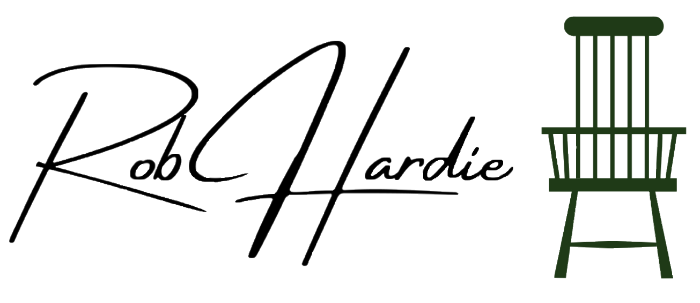
Windsor Chairs
So what is a Windsor Chair?
This is a question that I get asked a lot. Everyone has seen and sat in Windsor chairs as they are everywhere. Pubs, restaurants, peoples kitchens and dining rooms. In fact just about anywhere. Why they are called Windsor chairs is somewhat of a mystery. Popular opinion is that they were first made in Windsor. However, that is simply not the case. Another popular theory is that King George III was out hunting in Windsor Great Park when he took shelter from a storm in a peasant’s cottage. So impressed with the chair he sat in there he commissioned his court cabinetmaker to replicate it.
It is thought that the earliest Windsor chairs date around the 1720’s. They were called forest chairs and typically painted green. In this form, they were used outside. The main centres for Windsor chairmaking were in the Chiltern Hills in Buckinghamshire and, in their hay day, were made in vast numbers very cheaply. The chair parts were made in the woods by bodgers. The name refers to someone making parts of the chair, rather than a completed object. Hence the name has been adopted for someone only doing part of a job with the insinuation that they haven’t finished a job properly. One of the last Chiltern bodgers, Samuel Rockall, died as recently as 1962.
However, Windsor chairs have been made all over the UK and have subsequently spread across the globe. When windsor chairs and their makers made it over to the USA it is fair to say that they took the style and ran with it. American windsors have a style of their own and they have refined chairmaking in their own direction.
Windsor chair construction
Windsor chair construction is what defines a Windsor chair. The chair is built around the seat. The seat is solid wood, often from one plank. Socketed into this are the legs. These may be accompanied with stretchers, the braces between the legs. They are called stretchers as they “stretch” the legs apart. This introduces some tension in the structure which adds strength and rigidity.
The upper parts of the chair, the spindles and arm posts/supports, are likewise fixed into the seat but from above. In Windsor chairs, the legs do not extend up into the back of the chair. The spindles have an arm rail, bow or crest that joins them and again adds rigidity and strength.
No metal fastenings are used in Windsor chairs. Glue is used although it is possible to make a chair without glue and use the properties of wood to make the joints strong. Wood shrinks as it dries and so pushing a dry spindle into a moister seat, for example, will cause the spindle to swell and lock together. Wedges are also used to expand a wooden tenon to make it fit very tightly into a joint.
Finely made Windsor chairs also use carefully selected straight-grained wood in the legs and spindles. Grain that runs along the length of a leg or spindle is incredibly strong. Most chairs that break do so because the wood has grain that runs obliquely down a leg rather than right along it. To compensate for this, it is common to see mass-produced Windsor chairs made with very chunky legs and spindles as the grain direction is then not so critical. But the end result is a chair that is a very poor relative of a well made chair.
